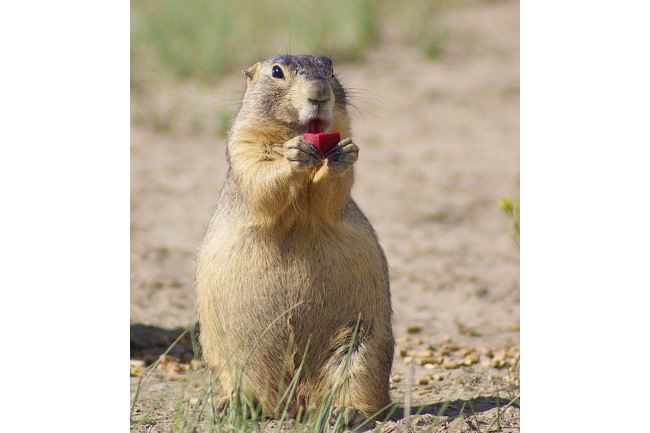24 July 2020
Zoonotic Diseases: Plugging the Source Before the Flood
Posted by Shane Hanlon
This is part of a student blog series as part of the University of Pittsburgh’s Disease Ecology Class that our own Shane M Hanlon is currently teaching. Find out more about the series and read all the posts here!
By Deshawna Glenn

A prairie dog in Colorado noms on a plague vaccine. It tastes like peanut butter. (Credit: Tonie Rocke/USGS)
A whopping seventy-five percent of emerging diseases have been said to be zoonotic, meaning that such diseases can spread from wildlife to humans, an example being our current pandemic consisting of Covid-19 a bat-to-human infection. With such a high number of these emerging diseases being linked to the possible spread to the human population, there is a race to find a solution or at least bring about a decline in the rate of infection. A new study is questioning whether or not vaccinating these disease carrying animals is the solution to stop this zoonotic spread, because if the animals don’t have the disease then how can they spread it? While this idea seems all too good to be true, the experiments for this have shown some promise. Dropping liquid rabies vaccine packets disguised as treats to feed feral dogs and coyotes as part of an oral vaccine program in Texas, showed success as it was able to eliminate the canine strain of rabies in the U.S. and also keeps it from coming back through the border of Mexico. This may not seem like much being that it is only one reservoir of the disease, but it is for surely just the tip of the iceberg for the success that is possible to come from such an experiment.
They are currently focusing on things such as getting a hold on Lyme disease by approaching the diseases main reservoir, the white-footed mouse with similar tactics, the same with treating prairie dogs to fight against the plague, and bats to fight against the future of the coronavirus.
With every big dream for the future comes drawbacks and hurdles, with treating the bats some difficulty has been found with trying to keep them alive while being held captive to be tested on and also creating an effective way to bait them with them being animals that eat while in flight. All in all, it may take some time to see results, decades even without being able to get a hold on the reservoirs of said diseases. Even so, this experiment looks as though it could be the answer to the human races fight to avoid these deadly zoonotic infections and future pandemics from such diseases, other than you know, avoiding wildlife all together . Source
Deadly Animal Diseases Can Jump to Humans. Is Vaccinating Wildlife the Answer?










 The Plainspoken Scientist is the science communication blog of AGU’s Sharing Science program. With this blog, we wish to showcase creative and effective science communication via multiple mediums and modes.
The Plainspoken Scientist is the science communication blog of AGU’s Sharing Science program. With this blog, we wish to showcase creative and effective science communication via multiple mediums and modes.